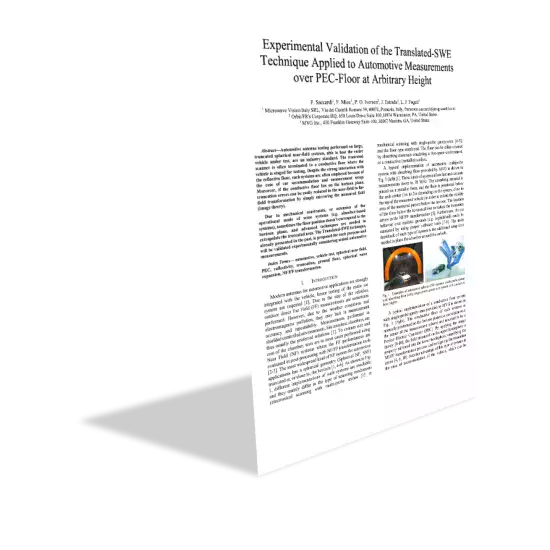
Automotive antenna testing performed on large, truncated spherical near-field systems, able to host the entire vehicle under test, are an industry standard. The truncated scanner is often terminated to a conductive floor where the vehicle is staged for testing. Despite the strong interaction with the reflective floor, such systems are often employed because of the ease of car accommodation and measurement setup. Moreover, if the conductive floor lies on the horizon plane, truncation errors can be easily reduced in the near-field to far- field transformation by simply mirroring the measured field (image theory).
Due to mechanical constraints, or extension of the operational mode of some systems (e.g. absorber-based systems), sometimes the floor position doesn’t correspond to the horizon plane, and advanced techniques are needed to extrapolate the truncated area. The Translated-SWE technique, already presented in the past, is proposed for such purpose and will be validated experimentally considering scaled automotive measurements.